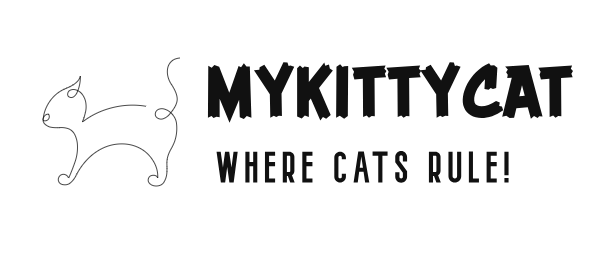Love biting is a common behavior in cats, often misunderstood by cat parents. Cats engage in love biting as a way to communicate that they are done with the interaction, rather than as a sign of affection. These bites are usually gentle and don’t break the skin, but can still be startling and painful. Love bites can be triggered by overstimulation during petting or as part of the cat’s grooming process. Cats may also engage in playful biting or aggressive biting due to fear, anxiety, pain, or illness.
To respond appropriately to love bites, it’s important to watch for signs of discomfort and stop petting if the cat shows any negative body language. Petting sessions should be brief and focused on areas that cats enjoy, such as around the ears and under the chin. It’s important to never react negatively to cat biting and to avoid physically retaliating. If a cat breaks the skin while biting, it’s important to wash the wound immediately and seek medical care if any swelling or redness occurs.
Overall, understanding a cat’s body language and respecting their boundaries can help prevent love bites and maintain a harmonious relationship with your feline friend.
Key Takeaways:
- Love biting in cats is a form of communication, not necessarily affection.
- Love bites can be triggered by overstimulation or as part of grooming behavior.
- Playful biting and aggressive biting can also occur due to fear, anxiety, pain, or illness.
- Watch for signs of discomfort and negative body language when interacting with cats.
- Petting should be brief and focused on areas cats enjoy.
- Never react negatively or physically retaliate to cat biting.
- If a love bite breaks the skin, wash the wound immediately and seek medical care if necessary.
The Meaning Behind Love Bites
Cats engage in love biting as a way to communicate that they are done with the interaction, rather than as a sign of affection. These bites may seem confusing and even painful to humans, but it is important to understand that cats have their own unique ways of expressing themselves. Love bites are typically gentle and do not break the skin, but they can still startle or cause discomfort. It’s crucial for cat parents to recognize that these bites are not intended to harm, but rather to convey a message.
Love biting can be triggered by various factors, such as overstimulation during petting or as part of the cat’s grooming routine. Cats have different tolerance levels for physical contact, and they use gentle nips as a way to communicate their boundaries. It’s essential to pay attention to your cat’s body language and respond accordingly. If your cat shows signs of discomfort, such as flattening their ears, twitching their tail, or tensing their body, it’s best to stop petting and give them space.
Understanding the difference between love bites and other forms of biting is vital. Playful biting is often accompanied by other playful behaviors, such as pouncing or batting with their paws. It is usually gentle, and cats may retract their claws during play. On the other hand, aggressive biting is forceful, accompanied by hissing or growling, and can cause injury. Aggressive biting may be triggered by fear, anxiety, pain, or illness, and it’s important to seek professional help if your cat displays this behavior.
Recognizing Discomfort Signals
Cats have their own way of communicating when they are feeling uncomfortable or stressed. It’s important for cat parents to be able to recognize these signals to prevent love bites and maintain a positive interaction. Some common signs of discomfort in cats include flattened ears, dilated pupils, tail flicking, tense body posture, and a swishing or lashing tail. If you notice these signs, it’s crucial to give your cat some space and allow them to relax.
In addition, paying attention to your cat’s body language during petting sessions can help prevent love bites. Cats have preferred areas to be petted, such as around the ears and under the chin. Avoid touching sensitive areas like the belly or tail, as this may trigger a defensive response. Keeping petting sessions brief and stopping if your cat shows any signs of discomfort will help maintain a positive bond with your feline friend.
By understanding the meaning behind love bites and recognizing the signs of discomfort in cats, cat parents can create a harmonious relationship with their feline companions. Respecting their boundaries, providing appropriate physical and mental stimulation, and seeking professional help when needed are essential in ensuring your cat’s well-being. Remember, love bites are not a sign of aggression or dislike but rather a unique form of communication in the feline world.
Triggers for Love Bites
Love bites can be triggered by overstimulation during petting or as part of the cat’s grooming process. Cats have different tolerance levels when it comes to physical interaction, and petting that goes on for too long or becomes too intense can lead to love bites. It’s important to pay attention to your cat’s body language and watch for signs of discomfort, such as ears flattening, tail twitching, or the cat tensing up.
In addition to overstimulation, cats may also engage in love biting as part of their grooming routine. When cats groom themselves or another cat, they use their teeth to bite and nibble at their fur. Sometimes, during this grooming process, they can get carried away and may accidentally bite too hard, resulting in a love bite. It’s important to understand that this is not a sign of aggression, but rather a natural behavior for cats.
Common triggers for love bites:
- Overstimulation during petting
- Extended or intense petting sessions
- Unfamiliar or uncomfortable handling
- Being touched in sensitive areas, such as the belly or tail
- During play sessions
It’s important to remember that love bites are not meant to cause harm, but they can still be painful. To prevent love bites, it’s crucial to pay attention to your cat’s body language and respond accordingly. If you notice any signs of discomfort, such as flattened ears or a twitching tail, it’s best to stop the interaction and give your cat some space. By understanding your cat’s triggers and respecting their boundaries, you can create a more harmonious relationship and minimize the occurrence of love bites.
| Triggers | Prevention |
|---|---|
| Overstimulation during petting | Keep petting sessions short and pay attention to your cat’s body language. |
| Extended or intense petting sessions | Take breaks during petting sessions and give your cat time to relax. |
| Unfamiliar or uncomfortable handling | Be gentle and patient when handling your cat, especially if they are not used to being touched in certain areas. |
| Being touched in sensitive areas, such as the belly or tail | Avoid touching your cat in sensitive areas if they show signs of discomfort or stress. |
| During play sessions | Monitor your cat’s play sessions and redirect their biting behavior to appropriate toys. |
Playful Biting vs. Aggressive Biting
Cats may also engage in playful biting or aggressive biting due to fear, anxiety, pain, or illness. It’s important to understand the difference between these behaviors in order to address them appropriately.
Playful biting is a natural behavior for cats, especially kittens. It is their way of practicing hunting skills and engaging in play. Playful bites are usually gentle, with no aggression or intent to harm. The cat may also display other playful behaviors, such as pouncing or chasing. It’s important to provide cats with appropriate toys and play sessions to redirect their energy and prevent them from using their teeth on human hands or feet.
On the other hand, aggressive biting is a serious behavior issue that requires attention. Aggressive bites are often accompanied by other signs of aggression, such as growling, hissing, or a tense body posture. Cats may become aggressive when they feel threatened, stressed, or in pain. It’s crucial to identify the underlying cause of the aggression and address it with the help of a veterinarian or animal behaviorist. They can provide guidance on behavior modification techniques and, if necessary, recommend medical treatment or interventions to manage the aggression.
Recognizing the Signs:
When determining if a cat’s biting behavior is playful or aggressive, it’s important to observe their body language and overall behavior. Playful biting is usually accompanied by relaxed body language, a playful stance, and an overall friendly demeanor. The cat may also exhibit other playful behaviors, such as gently pawing or licking.
On the other hand, aggressive biting is often accompanied by tense body posture, flattened ears, dilated pupils, and an overall defensive or threatening demeanor. The cat may also display other signs of aggression, such as hissing, growling, or swatting with their paws. It’s crucial to respect the cat’s boundaries and avoid any further interactions if they display these signs of aggression.
In conclusion, understanding the difference between playful biting and aggressive biting is essential for cat parents to address their cat’s behavior issues effectively. By providing appropriate outlets for play, seeking professional guidance when necessary, and recognizing the signs of aggression, cat parents can create a safe and harmonious environment for their feline companions.
| Biting Behavior | Characteristics |
|---|---|
| Playful Biting | – Gentle bites without aggression – Accompanied by other playful behaviors – Relaxed body language |
| Aggressive Biting | – Bites accompanied by signs of aggression – Tense body posture – Defensive or threatening demeanor |
Recognizing Discomfort Signals
To respond appropriately to love bites, it’s important to watch for signs of discomfort and stop petting if the cat shows any negative body language. Cats communicate their feelings and boundaries through various signals. By recognizing these discomfort signals, you can prevent love bites and maintain a positive interaction with your feline friend.
Here are some common discomfort signals to look out for:
- Tail flicking: If a cat’s tail starts twitching or flicking rapidly, it’s a clear indication that they are feeling agitated or annoyed. This is a sign that you should stop petting or interacting with the cat.
- Ear positioning: When a cat’s ears are flattened or pulled back against their head, it signifies discomfort or fear. Avoid touching the cat’s ears and give them space to calm down.
- Whisker tension: Cats have sensitive whiskers that they use to gauge their surroundings. If a cat’s whiskers are pulled back tightly against their face, it suggests that they are feeling stressed or anxious. Give them time to relax before attempting to pet them again.
- Dilated pupils: When a cat’s pupils are fully dilated, it indicates heightened arousal or potential aggression. This is a clear warning sign that the cat is not comfortable and should not be touched.
By paying attention to these discomfort signals, you can better understand your cat’s boundaries and avoid triggering love bites. Remember to respect your cat’s personal space and allow them to initiate and end interactions on their terms. Building trust and maintaining a harmonious relationship with your cat is key to preventing love bites and fostering a loving bond between you and your feline companion.
| Discomfort Signal | Meaning |
|---|---|
| Tail flicking | Agitation or annoyance |
| Ear positioning | Discomfort or fear |
| Whisker tension | Stress or anxiety |
| Dilated pupils | Heightened arousal or potential aggression |
Best Approaches to Petting
Petting sessions should be brief and focused on areas that cats enjoy, such as around the ears and under the chin. Cats have sensitive areas, and petting them in these preferred spots can help to create a positive interaction. When petting your cat, remember to use slow, gentle strokes to avoid overstimulation. Pay attention to their body language and cues to determine if they are enjoying the interaction or becoming uncomfortable.
“Cats have different preferences when it comes to petting,” explains Dr. Emily Johnson, a feline behavior expert.
“Some cats may prefer gentle rubs on their cheeks, while others enjoy a light scratch on their chin. It’s important to respect their individual preferences and adjust the way you pet accordingly.”
To establish trust and build a strong bond with your cat, it’s essential to let them dictate the duration and intensity of the petting session. Keep an eye out for signs of overstimulation, such as ears pinned back, tail twitching rapidly, or the cat moving away from you. If you notice any of these signals, it’s time to stop petting and give your cat some space. By recognizing and respecting their boundaries, you can prevent love bites and maintain a positive relationship.
| Signs of Overstimulation to Watch For | What to Do |
|---|---|
| Ears pinned back | Stop petting and give your cat space |
| Tail twitching rapidly | Stop petting and allow your cat to calm down |
| Attempting to move away | Respect their boundaries and give them some time alone |
Remember, cats are individuals with unique personalities and preferences. While some may enjoy prolonged petting sessions, others may prefer shorter, more focused interactions. By observing their body language and responding accordingly, you can ensure that petting remains a positive experience for both you and your feline companion.
Dealing with Love Bites
It’s important to never react negatively to cat biting and to avoid physically retaliating. When a cat engages in love biting, it is crucial to remain calm and composed. Reacting with aggression or punishment can escalate the situation and damage the bond between you and your feline friend.
Instead, try redirecting your cat’s attention by providing them with appropriate toys or engaging in interactive play. This can help satisfy their need for stimulation and prevent them from resorting to love biting as a form of communication.
Additionally, consider implementing positive reinforcement techniques to encourage desirable behaviors. Reward your cat with treats or praise when they engage in gentle interactions without biting. This can help them associate non-biting behavior with positive experiences and reinforce the bond between you and your furry companion.
Remember, every cat is unique, and it may take time to understand and address the underlying causes of their love biting. Patience, consistency, and seeking advice from a veterinarian or animal behaviorist can be instrumental in finding effective solutions to manage and prevent love bites in the long run.
| Tips for Dealing with Love Bites: |
|---|
| Remain calm and avoid reacting negatively or physically retaliating. |
| Redirect your cat’s attention to appropriate toys or engage in interactive play. |
| Implement positive reinforcement techniques to encourage non-biting behavior. |
| Be patient and seek advice from a veterinarian or animal behaviorist if needed. |
By understanding and addressing your cat’s love biting behavior in a positive and empathetic manner, you can foster a deeper bond and ensure a peaceful coexistence with your feline companion.
Handling Skin Breakage
If a cat breaks the skin while biting, it’s important to take immediate action to ensure proper wound care and prevent any complications. Here are some steps to follow if you find yourself dealing with a love bite that has broken the skin:
- Clean the wound: Start by gently washing the wound with warm water and mild soap. This will help remove any dirt or bacteria that may have entered the wound.
- Apply an antiseptic: After washing the wound, apply an antiseptic solution to help prevent infection. You can find suitable antiseptics at your local pharmacy or consult your veterinarian for recommendations.
- Monitor for signs of infection: Keep a close eye on the wound for any signs of infection, such as increasing redness, swelling, or discharge. If you notice any of these symptoms, it’s important to seek medical care promptly.
- Seek medical care: If the wound shows signs of infection or if you’re unsure about how to properly care for it, don’t hesitate to consult a veterinarian. They can assess the wound, provide appropriate treatment, and offer guidance on wound care at home.
Remember, it’s crucial to react calmly and avoid any negative or aggressive behaviors towards the cat. Punishing or scolding the cat will only worsen the situation and strain your relationship. Instead, focus on providing a safe and comfortable environment for your feline companion.
| Signs of Infection | What to Look For | When to Seek Medical Care |
|---|---|---|
| Increasing redness around the wound | Check the wound regularly for any changes in color or appearance. | If redness spreads or intensifies |
| Swelling around the wound | Observe any changes in the size or shape of the wound. | If swelling becomes more severe or painful |
| Discharge or pus | Monitor for any unusual fluid coming from the wound. | If discharge increases or changes in color |
By following these steps and seeking medical care when necessary, you can ensure that any skin breakage caused by love biting is properly treated and prevent any potential complications. Remember to always approach your cat with patience and understanding, and maintain a positive and loving relationship through effective communication and respect for their boundaries.
Maintaining a Harmonious Relationship
Overall, understanding a cat’s body language and respecting their boundaries can help prevent love bites and maintain a harmonious relationship with your feline friend. Cats are unique individuals with their own preferences and comfort levels, and it’s important to recognize and respect their signals of distress or discomfort.
One key aspect of maintaining a harmonious relationship is being mindful of how you approach and interact with your cat. Start by observing their body language and tail movements. A raised tail indicates a friendly and relaxed cat, while a tail held low or tucked between the legs suggests fear or anxiety. If your cat shows any signs of discomfort, such as flattened ears, dilated pupils, or a tense body posture, it’s best to give them space and avoid any further interaction.
When petting your cat, focus on areas they enjoy, such as the base of the ears, under the chin, or along the cheeks. Avoid petting sensitive areas like the belly or tail, as these can trigger defensive reactions. Keep your petting sessions short and frequent, gradually increasing the duration as your cat becomes more comfortable.
If your cat starts to exhibit signs of overstimulation, such as twitching skin, tail flicking, or an agitated gaze, it’s crucial to stop petting immediately. Continuing to pet a cat in this state can lead to love biting or more severe aggression. Instead, distract your cat with a toy or engage them in an interactive play session to redirect their energy and provide a positive outlet for their natural instinct to hunt and play.
| Signs of Overstimulation | Signs of Comfort and Relaxation |
|---|---|
| – Twitching skin | – Relaxed body posture |
| – Tail flicking | – Slow blinking |
| – Dilated pupils | – Erect, forward-facing ears |
| – Agitated gaze | – Purring |
In summary, by understanding your cat’s body language and respecting their boundaries, you can minimize the risk of love bites and create a harmonious environment for both you and your feline companion. Remember, each cat is unique, so it’s essential to be patient, observant, and responsive to their individual needs and preferences.
Conclusion
Love biting in cats is a complex behavior that can be better understood by observing their body language and responding appropriately. Cats use love bites as a way to communicate that they have had enough of the interaction, rather than as a sign of affection. These bites are generally gentle and do not break the skin, but they can still be uncomfortable and surprising for cat parents.
It is important to recognize that love bites can be triggered by overstimulation during petting or as a part of the cat’s grooming process. Cats may also engage in playful biting or aggressive biting due to fear, anxiety, pain, or illness. To address these behaviors, it is crucial to watch for signs of discomfort and stop petting if the cat displays negative body language.
When petting cats, it is best to keep the sessions brief and focus on areas that they enjoy, such as around the ears and under the chin. It is important to avoid reacting negatively or physically retaliating to a cat’s bite, as this can escalate the situation. If a love bite breaks the skin, it is essential to wash the wound immediately and seek medical care if any swelling or redness occurs.
Understanding a cat’s body language and respecting their boundaries is key to preventing love bites and maintaining a harmonious relationship with your feline friend. By paying attention to their cues and responding appropriately, cat parents can create a safe and enjoyable environment for their beloved pets.
FAQ
Q: What are love bites in cats?
A: Love bites are gentle bites that cats use to communicate that they are done with the interaction. They are not a sign of affection.
Q: What triggers love bites in cats?
A: Love bites can be triggered by overstimulation during petting or as part of the cat’s grooming process. Cats may also engage in playful or aggressive biting due to fear, anxiety, pain, or illness.
Q: How should I respond to love bites?
A: It’s important to watch for signs of discomfort and stop petting if the cat shows any negative body language. Petting sessions should be brief and focused on areas that cats enjoy, such as around the ears and under the chin.
Q: Should I physically retaliate if my cat bites me?
A: No, it’s important to never react negatively or physically retaliate to cat biting. Instead, calmly remove yourself from the situation and provide the cat with space.
Q: What should I do if a cat’s love bite breaks the skin?
A: Wash the wound immediately and seek medical care if any swelling or redness occurs. Proper wound care is essential to prevent infection.
Q: How can I maintain a harmonious relationship with my cat?
A: Understanding your cat’s body language, respecting their boundaries, and preventing love bites through appropriate petting techniques will contribute to a harmonious relationship.







